Think of your social media content strategy as your blueprint for your business's success across social platforms. If you don't take the time to put together a solid strategy, you will find that your social efforts lack direction and don't deliver the results you expect to see.
You need to dedicate the time and resources to plan your approach, map out exactly what you want to achieve, how you will get there, and how you will measure the impact that your efforts have on your goals.
But it isn't always easy to know where to start, especially if you have never put one together before.
In this guide, we will walk you through a proven 7-step process to developing a social content strategy from scratch, specifically looking at:
Continue reading, and you will learn a simple but effective process that you can use to plan your social content and take your growth from your chosen platforms to the next level.
Why You Need a Social Media Content Strategy?
Strategy is underrated.
Sure, you might get away with posting something every day on your social channels without ever giving much thought to what you are posting, or more importantly, why.
But this isn't going to drive growth or real, impactful results.
You will not acquire new fans and followers or convince these individuals to visit your website or convert into a customer or client by blindly posting whatever you feel like pushing out that day. That is just not how it works.
You need to know what you want to achieve to figure out how you will get there. And this is what a strategy is.
When you can craft a strategy that maps out the route you need to take to meet your goals, your chance of achieving these massively increases. It also helps everyone involved to focus their efforts, something that, in itself, can help to improve performance and returns.
Social media should be a channel that drives sales and inquiries; it is not just a vanity channel. But for this to happen, you need to have a strategy that everyone on your marketing team works towards.
How to Develop a Social Content Strategy in 7 Simple Steps
The reality is that developing a social content strategy is easier than you probably think.
And following a proven process can help you define your goals, create and publish content to a schedule that is right for your audience, and measure your efforts' impact.
Keep reading to learn how you can do this in just 7 simple steps, including a look at the tools you should be using to make the whole process that little bit easier.
1. Setting Goals for Your Content
Have you ever heard of S.M.A.R.T. goals?
It is important that you start creating every strategy by knowing what you want to achieve, as this will help shape the path you take to make this happen. Otherwise, you are working blindly. And that is not very strategic at all.
Without goals and KPIs, you will also not be able to measure the effectiveness of your efforts.
Setting goals is all about having an indicator of success that allows you to determine your social strategy's ROI.
If you are not familiar with S.M.A.R.T goals, these are goals that are:
- Specific (Goals should be clear and specific to allow a solid focus on what needs to be achieved)
- Measurable (You must be able to measure the progress of goals to know when you've achieved them)
- Attainable (Goals should be realistic, yet should be challenging enough to motivate you)
- Relevant (Goals should be relevant to your wider business objectives and make sense when achieved)
- Time-bound (You should always set a timeframe for goals to be measured against to maintain focus)
Your social content strategy should start with goal-setting, as this is something that will help to shape the following steps in the process.
Having clearly defined goals means that you can align every piece of content, and every post that you publish, with these.
2. Know The Profile of Your Audience and When You Should Post
Knowing your audience's profile means that you can tailor your content to talk directly to these people.
After all, taking a targeted approach is almost always more effective than trying to engage too wide of an audience with a single strategy.
Knowing the times when your audience is the most active on each channel can also help you to generate an increased level of engagement by sharing your content at the right time. And the great news is that you can gain these insights from your main social channels.
Facebook Insights provides an absolutely phenomenal amount of data on your audience, and if you are not already using this to inform your social efforts, then you need to dive deep into the tool.
Head to your Facebook Business Page, and you will see an 'Insights' tab on the left-hand menu:
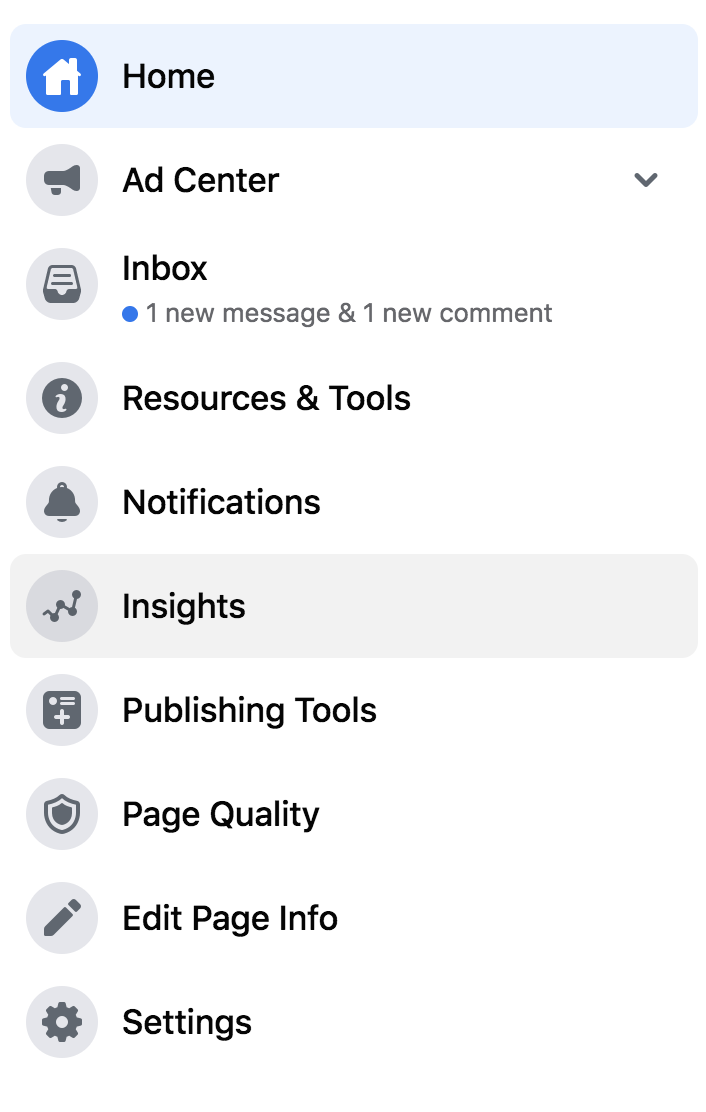
From here, you can gain a wealth of data around the performance of your page. But, for the purpose of putting together a solid strategy, you need to head to the 'people' tab where you can see information around who your key audience is:
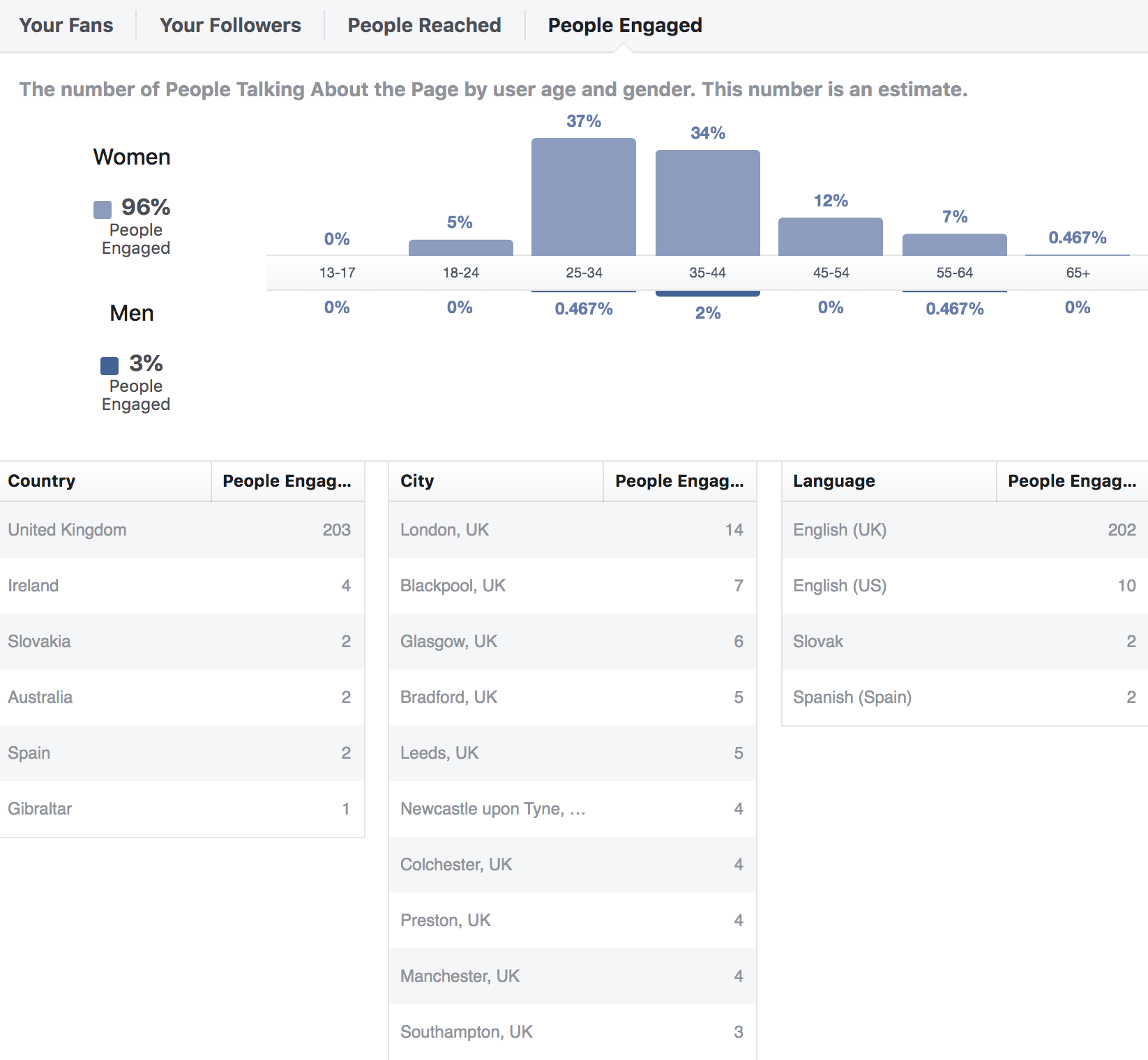
Next, head then to the 'posts' tab to gain an understanding of the times and days when your audience is most likely to be online:
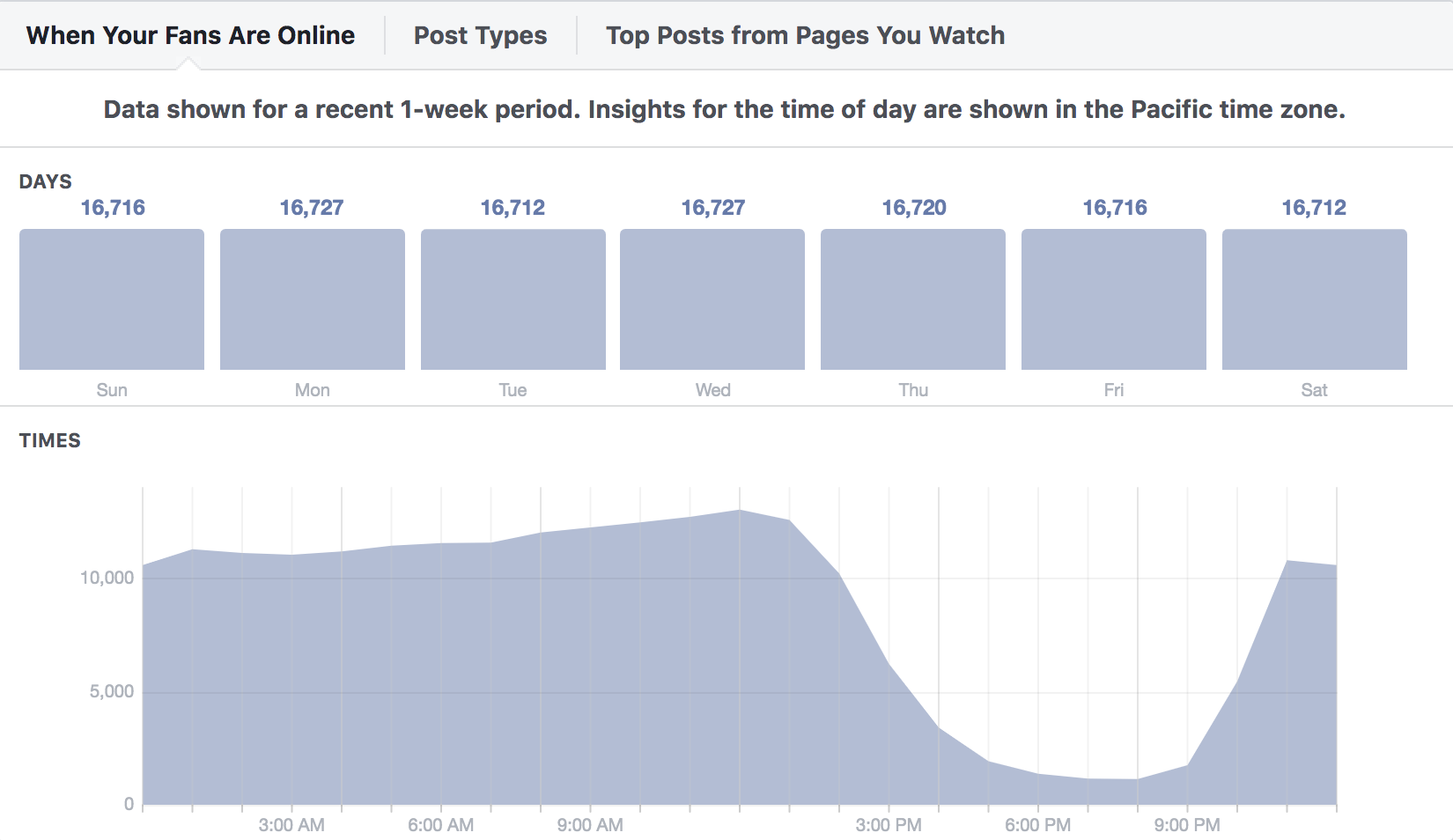
Unfortunately, Twitter deprecated its powerful audience insights dashboard earlier this year. However, you can still use the Analytics tool to gain some insights into your own Tweets' performance.
Head to Twitter Analytics and hit the 'Tweets' button at the top of the page:

On this page, you can see the days when your recent Tweets have performed the best:
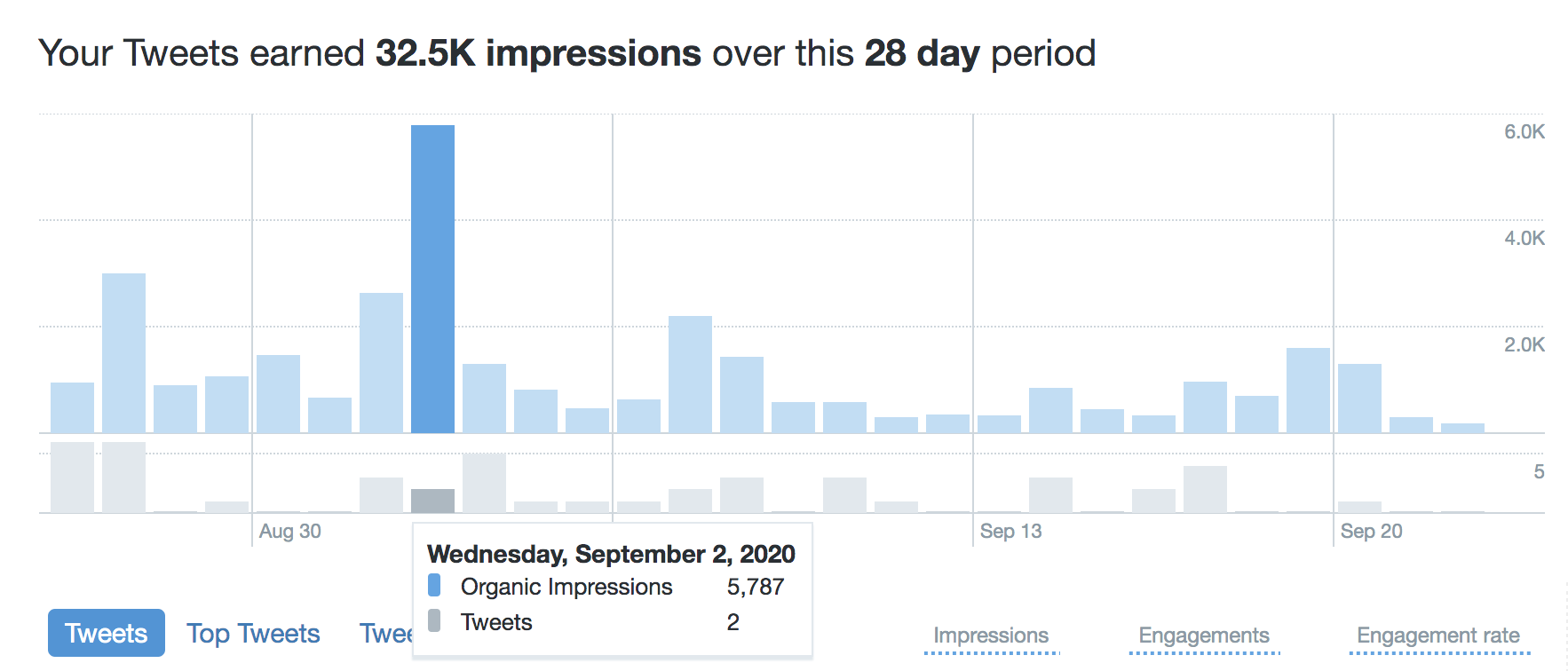
While this isn't as useful as Facebook Insights, it can help you to spot patterns of the days when your Tweets are the most likely to perform to the best of their potential. We will have some upcoming tips on how to get more insights on each of the social platforms.
If you are a B2B marketer, LinkedIn can give you a phenomenal amount of insights about your audience and those who follow your company page.
Head to the 'analytics' tab on your company page dashboard and navigate to 'Followers.'
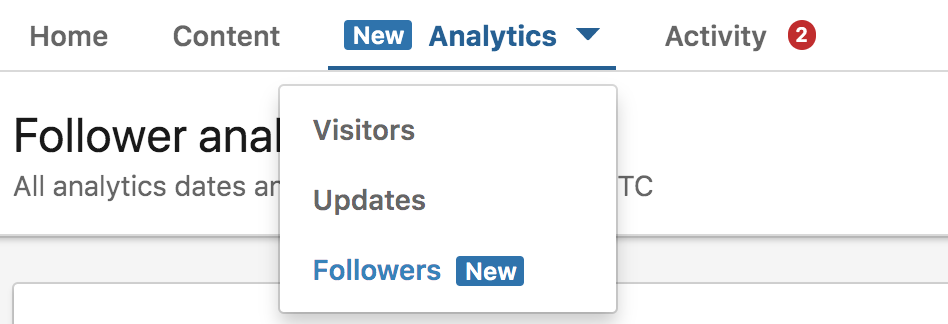
From here, you can access insights on:
- Follower metrics
- All followers
- Follower demographics
- Companies to track (how you compare to similar companies)
However, when it comes to understanding your audience, the 'follower demographics' section is insanely valuable, helping you to understand the exact profile of those who follow your page.
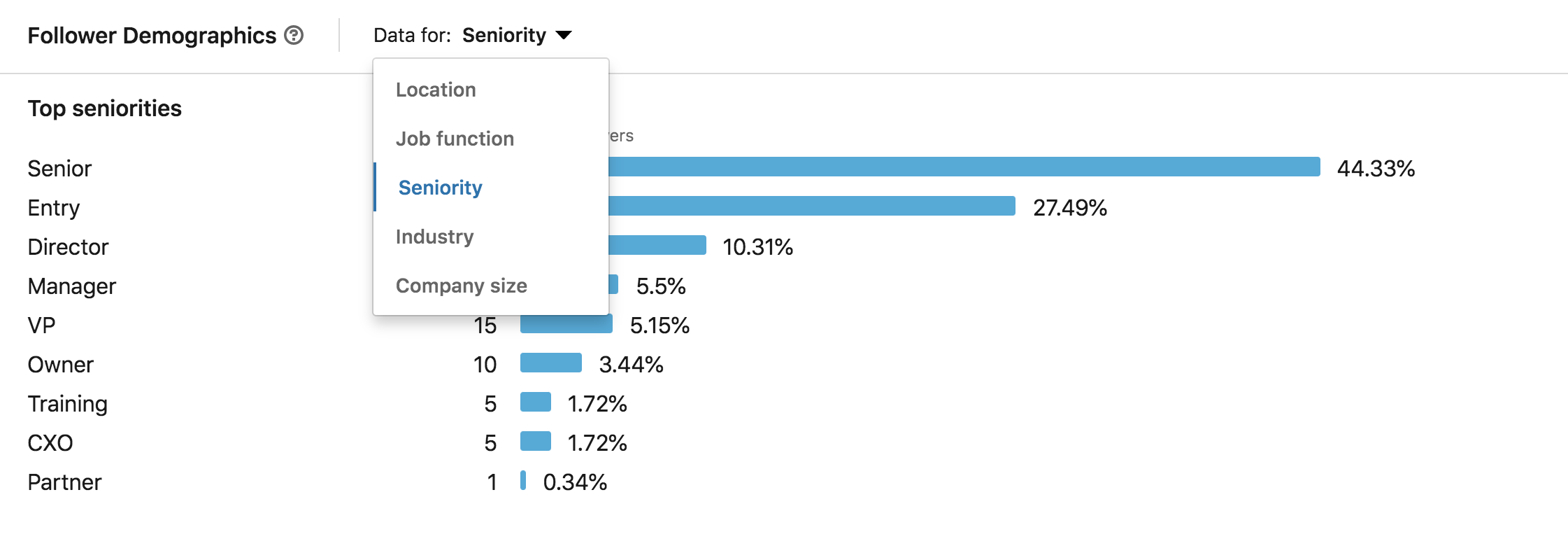
You can also gain insights into your audience on Instagram, TikTok, and YouTube. However, the most powerful insights are those that we have walked through above.
3. Choose the Right Social Platform(s)
You don't have to use every available social platform.
Let's repeat that — you don't have to use every available social platform.
In most instances, it makes sense to focus your efforts on the platforms where your audience is active and likely to engage with your business, rather than spreading your time and content too thinly across every available platform.
You will no doubt already have a good idea, by this stage, as to the platforms where your audience is the most active, but we recommend choosing a couple of these and executing a really solid strategy.
Trust us when we say that you will see far better results doing this than trying to be present everywhere.
As a general rule of thumb:
Facebook is effective for both B2B and B2C businesses, with support for a whole load of different content formats, ad targeting options, and users. There are very few businesses that should not include Facebook as one of their core channels.
Twitter isn't for every business, due to the platform's fast-moving nature and the fact that it is still very much based around a simple Tweet format. However, it is the perfect customer service platform for businesses that deal with high volumes of support and service queries.
LinkedIn is perfect for B2B service businesses and is the perfect place to position individuals and companies as experts through a content strategy based on thought leadership and a strong focus on editorial content.
Pinterest is a favorite amongst eCommerce retailers and owners of businesses that are easily promoted visually.
YouTube is the world's second-largest search engine, and pretty much all sectors can benefit from the platform. However, you need to be prepared to consistently publish engaging video content, something that not all businesses are set up to do.
Educational Resources: Video Marketing Crash Course and YouTube SEO
Instagram is often the first or second-choice platform for B2C businesses that have access to (or can take) engaging photos and images and engage their audience. It is usually of lesser-importance to B2B businesses.
TikTok is the newcomer to the social scene, and there are plenty of examples of brands winning big on the platform, but the format and nature of the content isn't for everyone. It is perfect for lifestyle-focused B2C brands.
4. Plan Social Content and Choose Formats
Once you have chosen the main social platforms that you are going to focus your efforts upon, you need to plan out your content and the formats that you are going to create.
And our guide on 15 Social Media Content Types (with examples for ideas and inspiration) is a great starting point to inspire you to create awesome content that resonates with your audience.
A great starting point is to map out the key messages that you want to share with your audience (ideally mixing sales-focused product or service posts with educational, information, or inspirational content), alongside the formats that you can create content around.
You need to balance different formats to ensure you are getting your key message across effectively, and some of the more popular ones that we recommend include:
- User-generated content
- Live streams
- Contests & competitions
- Case studies
- Influencer marketing collaborations
Don't rely on a single content format if you truly want to drive engagement from your audience, but be sure to balance the time needed to produce each different piece with the importance of maintaining a consistent publishing schedule.
You can save time (and get better results) by using the AI Social Content Generator. It allows you to create images, videos, captions, hashtags, and more using simple prompts.
To get started, choose which type of post you’d like to create:
- Text to Post: Enter one line of text to generate video, image, or carousel posts
- E-comm Product Post: Upload your product catalog to generate product-based posts
- Blog to Post: Convert a blog post into a social media video or carousel
- Script to Post: Create a video or carousel from a written script
- Business to Post: Generate posts based on your business information
- Meme Post: Let AI create memes based off your caption ideas
- Special Day Post: Make branded image posts for holidays and festivals
- Quote to Post: Turn text quotes into visually appealing images
- Manual Post: Use templates and tools to create videos, ads, images, stories, and carousels
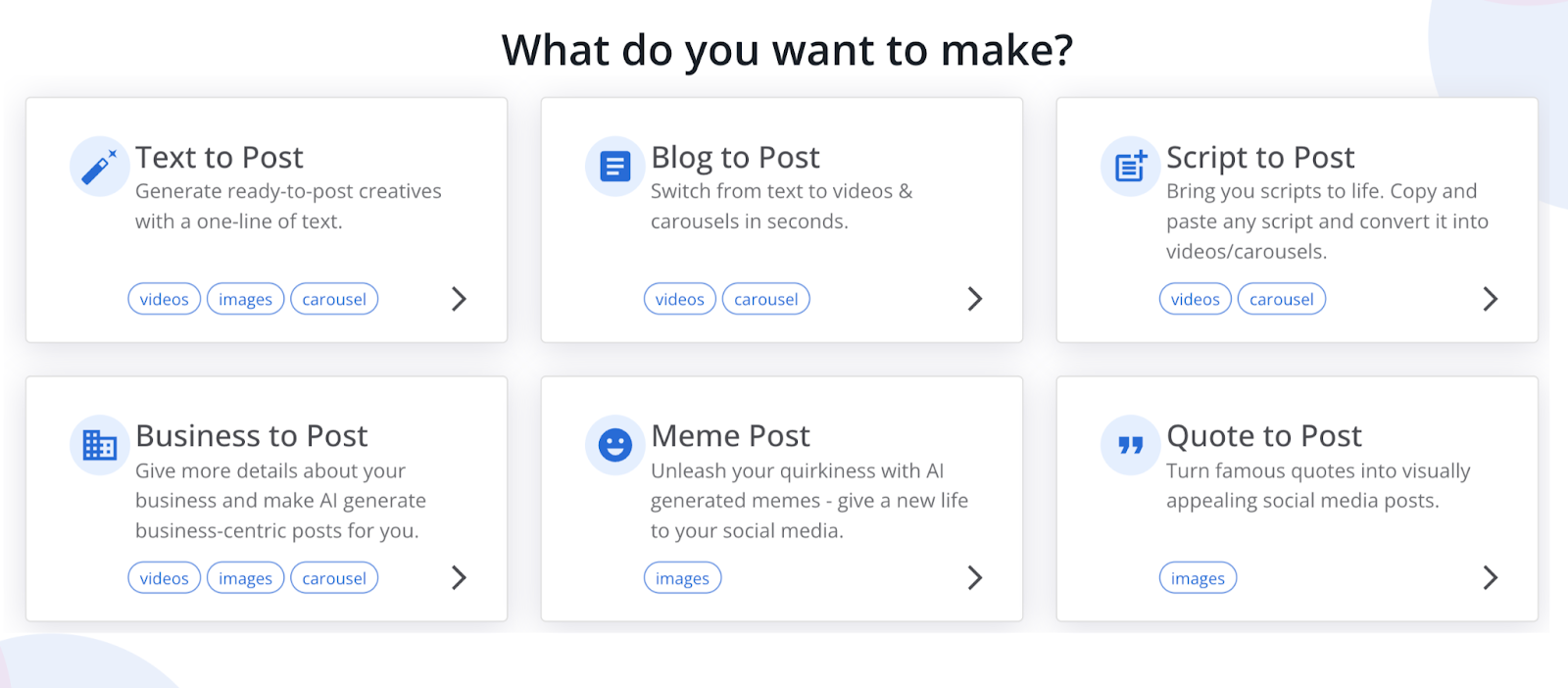
You can then choose from a variety of templates.
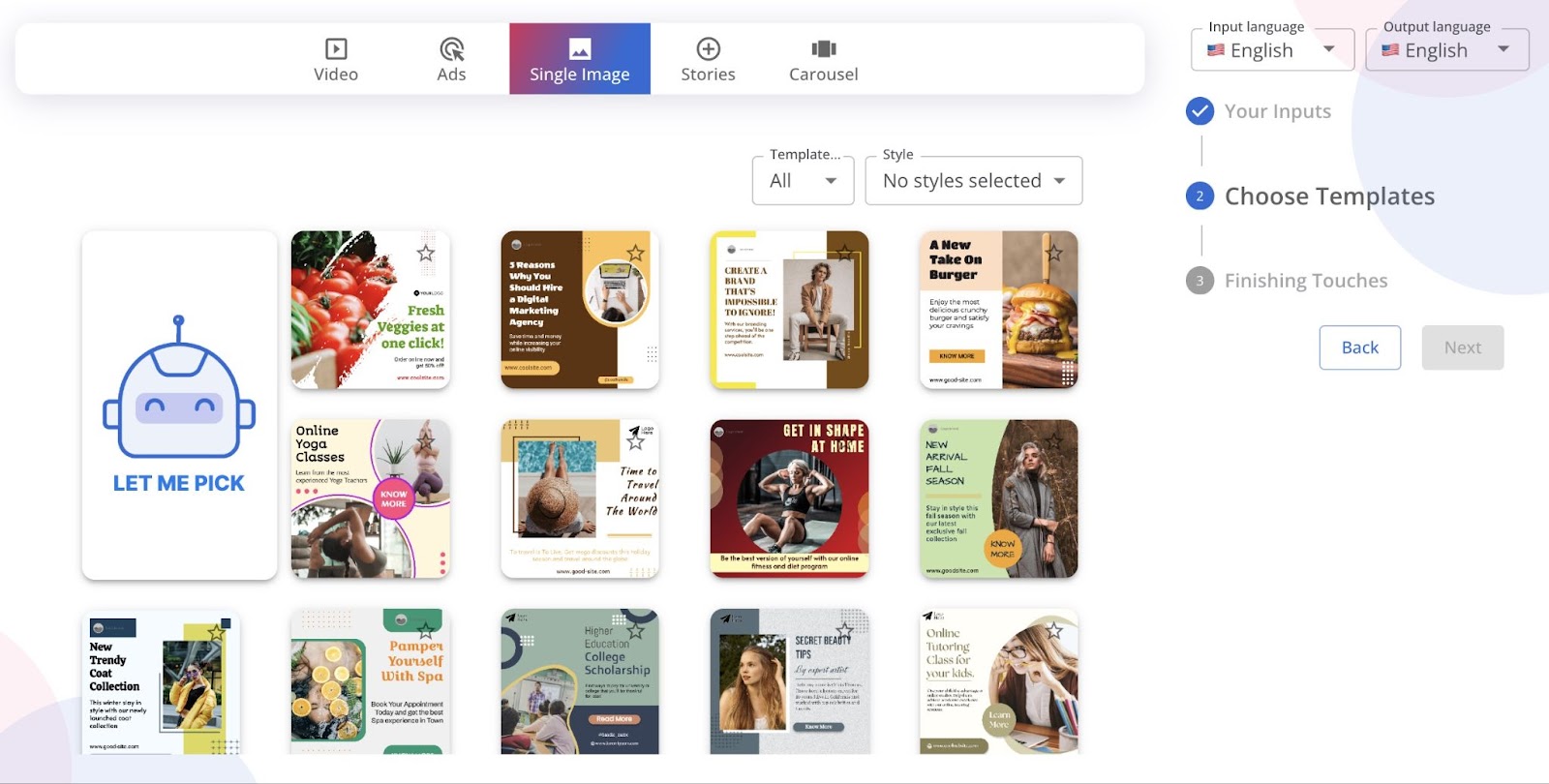
If you want, you can easily edit the AI-generated creative, caption, and hashtags.
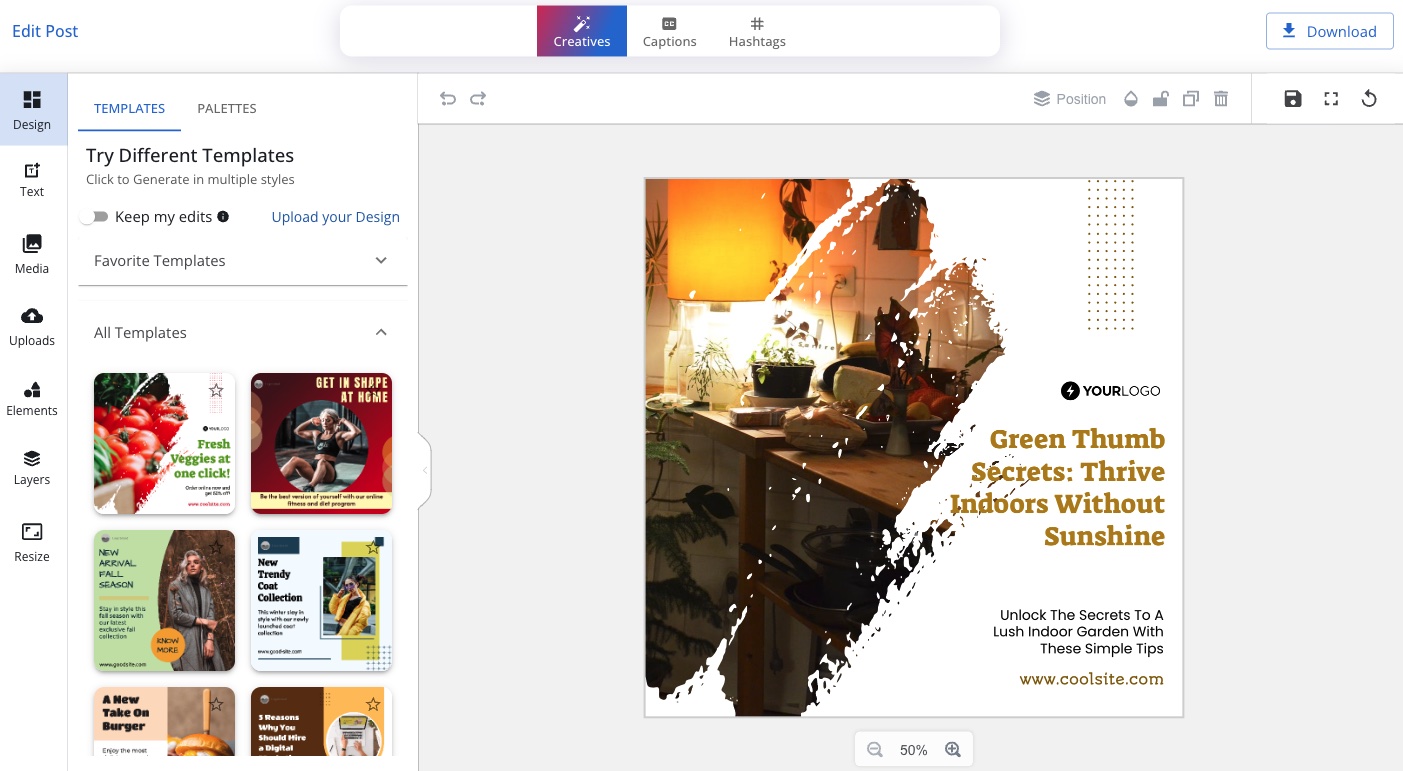
The AI Social Content Generator can also help with competitor analysis, hashtag analysis, and more.
You can find it in the Semrush App Center, alongside other social media marketing apps.
5. Create a Content Calendar
Once you have started planning out your content, you need to set up a content calendar that your team can use for organizational purposes. And this is important for a simple reason; it keeps you accountable.
Once you have set a publishing schedule and mapped it out on a content calendar, you have made a commitment. And this is often what is needed to keep your efforts focused and on track. It also helps you work with other teams to complete goals.
For example, if you know in 2 weeks, you are launching a new campaign and need graphics, your content team and graphics teams can both view the calendar and ensure tasks are done on time.
And creating a content calendar couldn't be easier; you can use the SEMrush marketing calendar to assign your social content with your wider digital marketing campaign:
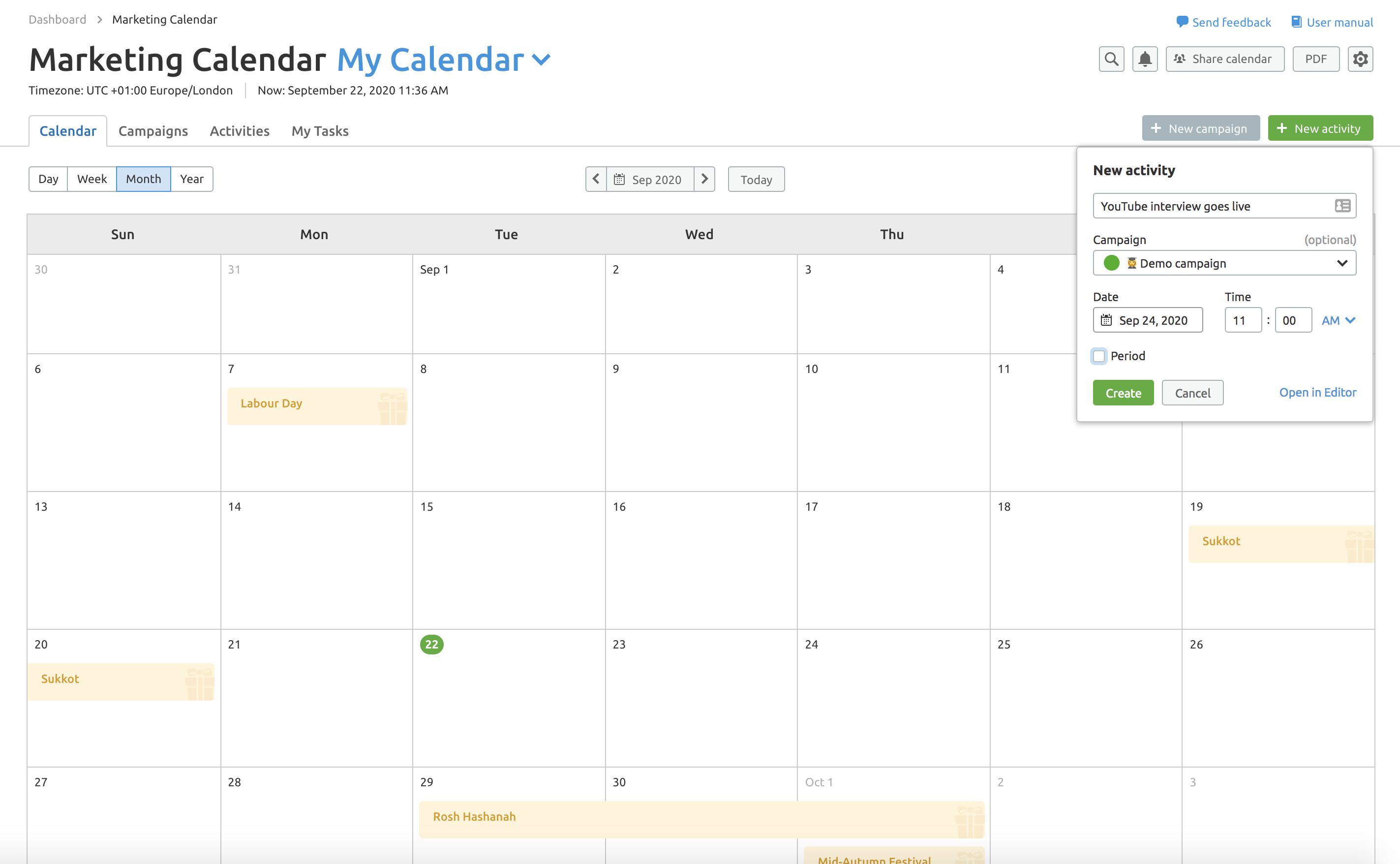
Just make sure to keep your calendar updated so your whole team can use it as a reference point.
Get into the habit of adding in your planned social content and sticking to it; this is often the motivation that most marketers need to keep on track.
And let's not forget that committing to regular social publishing is one of the main drivers of success. It is hard to stick to, and very few do. But this means that those who keep on track are typically the ones who gain a competitive advantage.
In terms of how frequently you should be posting on each platform, we recommend a baseline schedule that looks like this (depending on the platforms you are using):
- Facebook: 5 to 7 posts per week
- Twitter: 3 to 5 Tweets per day
- LinkedIn: 1 post per day
- Instagram: 1 post or story per day
- Pinterest: Focus on creating interesting boards and sharing relevant images rather than a set posting schedule
- TikTok: At least once per day
6. Publishing Your Content
Publishing your content on social media can be a time-consuming task.
And that's why many marketers choose to schedule their content in advance, making it easier to block out time each week to create your content and have it automatically post across your platforms at the time that you deem to be the most impactful.
You can schedule your social content with SEMrush's Social Media Toolkit.
Start by connecting your chosen social networks:
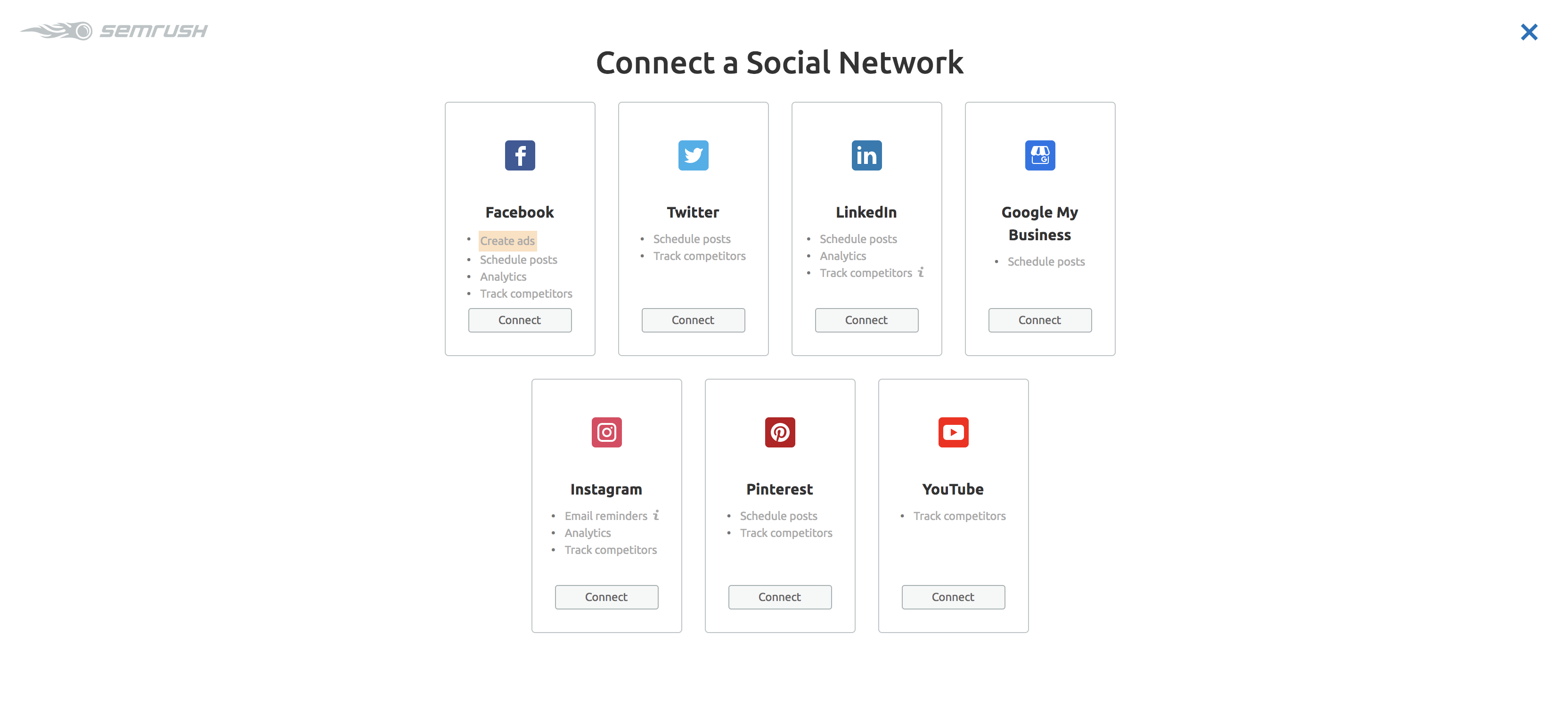
Once you have connected your channels, you will be able to schedule posts across each of these to have shares go out at your chosen time.
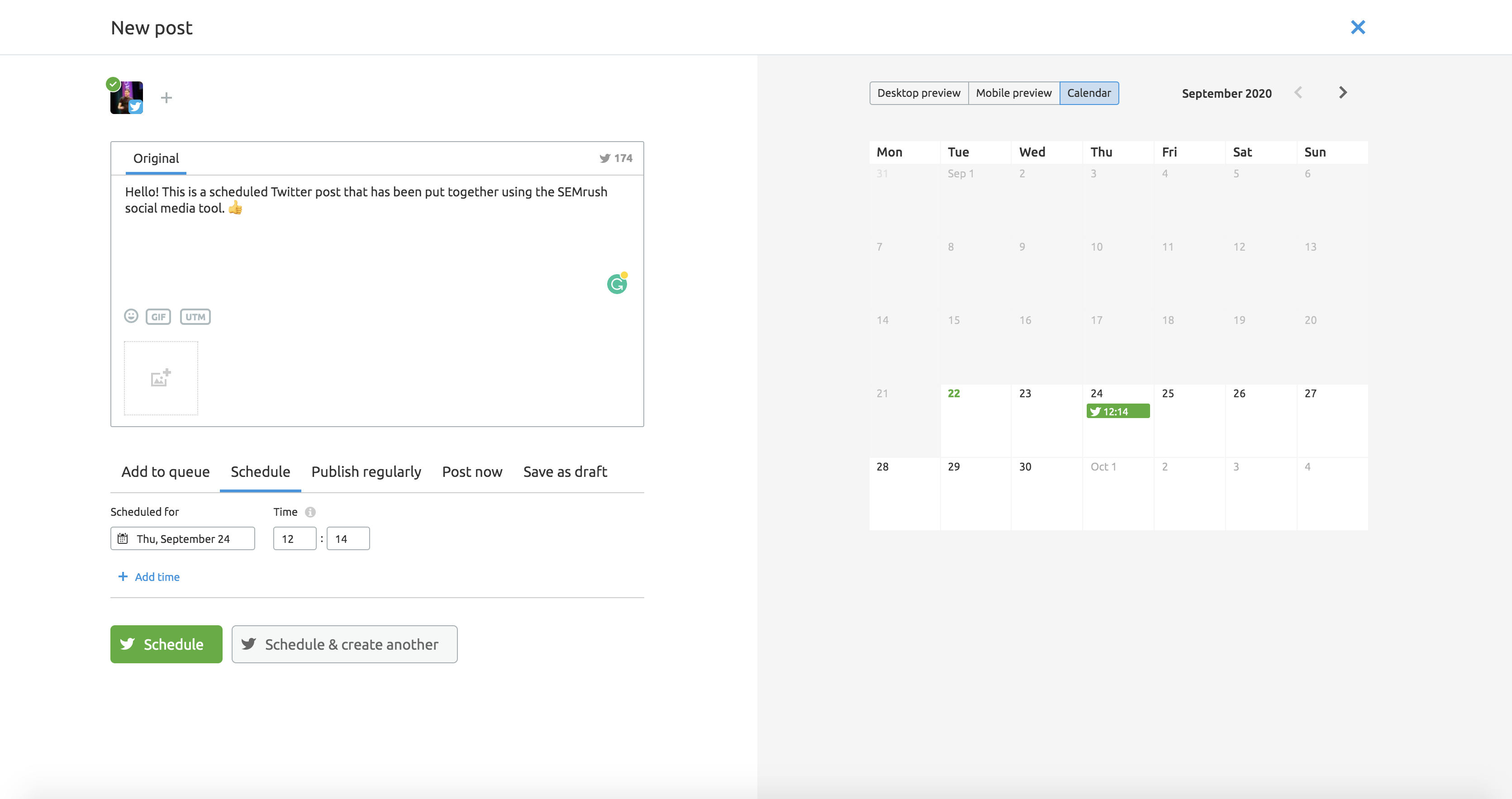
We recommend setting aside a regular time in your calendar each week to schedule your social content for the coming days. Again, this keeps you focused and on track to consistent publishing.
Take a read of our guide on " How to Automate Social Media Posting with SEMrush" to learn how you can schedule your content and maximize your productivity and social efforts.
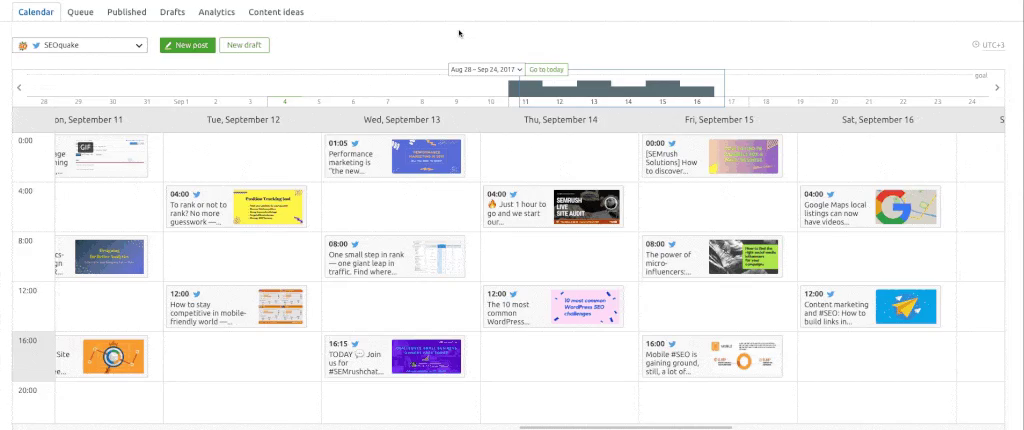
Also, see How SEMrush's Image Editor Will Save You Time on Social.
7. Analyze and Measure Your Content's Performance
Remember the goals you set when mapping out your strategy?
You need to track your content's performance against those goals; otherwise, you won't know how successful your efforts are. But how you track this very much depends upon the goals that you set.
We talked about ensuring that each goal is measurable, and this is where you should have identified what you will measure success as and how you will do it.
Let's say one of your goals is around increasing the engagement rate of your content on Facebook. To track this, you can use the SEMrush social media poster to analyze your recent posts and view the engagement rate of each:
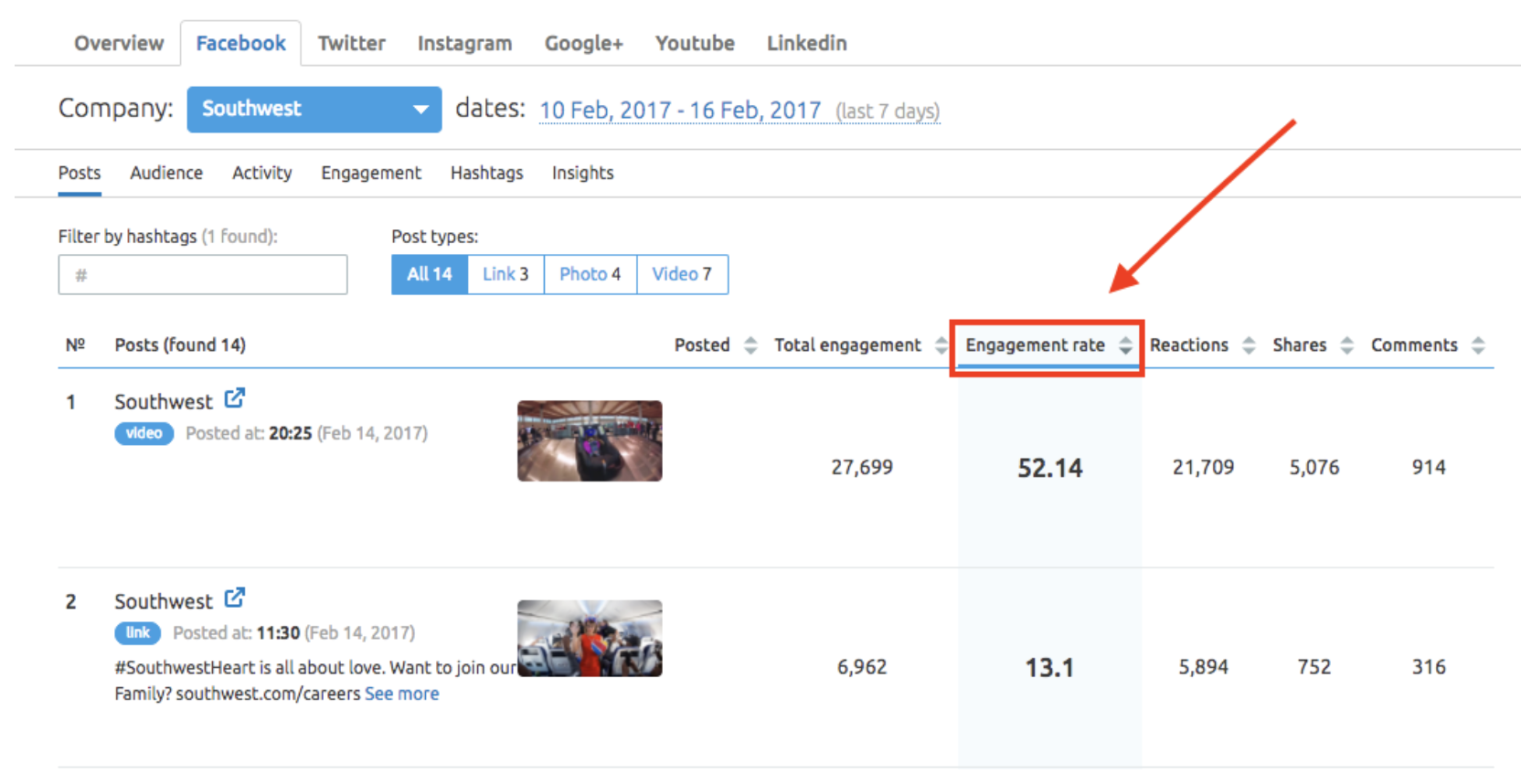
If you have set a benchmark for your performance, you can easily identify which posts are exceeding this.
We recommend analyzing the performance of your social efforts on a weekly basis and measuring these against the goals and KPIs that you set.
If you are on your way to achieving your goals, great. If not, a weekly check-in on progress means you are able to make adjustments and improvements to your strategy to get things back on track.
For more details on how to use these tools for each social platform, read How to Use SEMrush Social Media Tool for Every Platform.
Don't underestimate the power of putting together a solid social content strategy.
It is your roadmap to success, and having a clear plan of action that can be communicated across your team and key stakeholders and time invested in putting this together is time well spent.
Just be sure to follow a clear process, know your goals and checkpoints, and maintain a consistent approach to publishing great content!
